
Jason Kuo
Jesus follower, father, husband, San Francisco dweller.
Website
http://blog.jasonkuo.com
Libraries
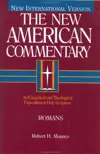

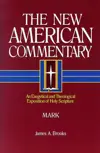

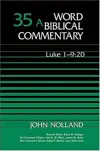


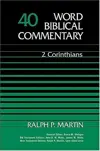

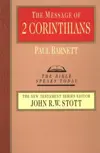

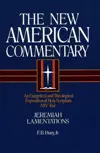

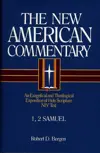

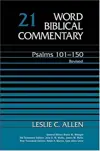

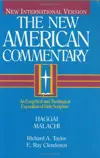

![The Letter to the Ephesians [Withdrawn]](https://bestcommentaries.com/images/bookthumbs/4-thumb.webp)
![The Letter to the Ephesians [Withdrawn]](https://bestcommentaries.com/images/bookthumbs/4-thumb.webp)
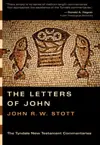

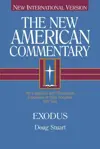

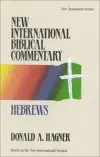







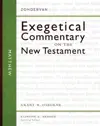

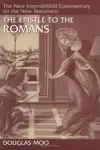

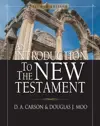

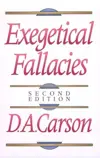

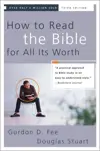







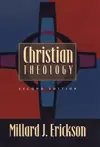

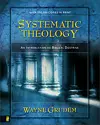





Reviews
Arnold, Clinton E. ed. Matthew. ZECNT. Zondervan, 2010.
n my preaching, research, and personal study, I have benefitted greatly from numerous scholarly commentaries. One new budding commentary series is the Zondervan Exegetical Commentary on the New Testament (ZECNT), which promises 20 volumes by evangelical scholars on all the books of the NT. I was blessed to receive a review copy* of one of the latest volumes from the folks at Zondervan Academic and koinonia: Matthew by Grant Osborne. Osborne, professor of New Testament at Trinity Evangelical Divinity School, is also the author of such works as The Hermeneutical Spiral and Revelation in the Baker Exegetical Commentary series. I was excited to start reading through this brand new, 1,152 page commentary on the book of the Bible that God really used to draw me close to him for the first time. I still remember leafing through the Gospel of Matthew with wonder as I read about Jesus. As I spent time in Matthew and in the commentary, I was once again blessed to sit in God's Word and ponder Jesus. Let me tell you right off the bat - I really like this new series and Osborne's volume.
About the ZECNT
Anyone who uses Bible commentaries with any regularity knows that there are a plethora of series out there, from every imaginable viewpoint and for the whole spectrum of possible audiences (uber-Bible nerd to regular Joe/Jill). One might ask, "Why another commentary series?" Clinton Arnold answers that question in the Series Introduction: This is a series for pastors and teachers who are looking for a "commentary series based on the Greek text." Such commentaries clearly exist (see NIGTC, WBC, Hermeneia to name a few), but the unique approach of the ZECNT that it is targeted for:
- Those with a Greek background,
- Who want precision on macro-level approaches to a section of text,
- Who want to-the-point analysis without getting sidetracked by rabbit chases,
- Like stuff like structural diagrams,
- Want something from a solid evangelical approach,
- Would like a little help with application of a section of text.
As such, they've divided the commentary by logical units into seven sections:
1. Literary Context
2. Main Idea
3. Translation and Graphical Layout
4. Structure
5. Exegetical Outline
6. Explanation of the Text
7. Theology in Application
The format of the text, I think, hits the sweet spot in between ultra-scholarly commentaries (see aforementioned NIGTC or WBC) and more concise or preacher-oriented commentaries (see TNTC, IVPNTC, or NAC). In addition to Osborne's volume on Matthew, there are three other commentaries available: Craig Blomberg on James, Thomas Schreiner on Galatians, and Clinton Arnold on Ephesians.
The Commentary
After spending about a month going through portions of Osborne's commentary on Matthew, I've come to really appreciate it. Osborne, from the preface, loves the church. This commentary is written with the church in mind, not simply adding another book on the Bible into the mix. He deftly walks through different passages, summarizing the various viewpoints, and then hits home main ideas when necessary. Whenever the sections shift into application, his paragraphs ooze his heart for God and the church. Here's a summary of the aspects of the commentary I appreciated:
+ Introduction to Narrative Hermeneutics. As Matthew is a Gospel, a narrative biography, you can't approach it the same way you'd approach one of Paul's letters. Cognizant of that, Osborne's introduction, instead of starting with the standard categories of authorship, genre, text, etc., he starts right away with a section "How to Study and Preach the Gospel of Matthew." There, he gives some basic strategies for understanding and studying the gospels, in a brief and practical manner.
+ Interaction with the Greek text. Each of the clause-by-clause analyses interact directly with the Greek text. Osborne provides his translation, with the original Greek in parentheses, and analyzes each clause piece by piece. As an added bonus, the ZECNT series does not transliterate the text, which I think makes it much easier for those with a Greek background to read it. I always had trouble reading transliterated text (such as in the Pillar Commentary Series), so I applaud this decision. Breaking up the analysis into clauses is also a good decision, in my opinion, as the comments can stay focused and precise. Moreover, it helps readers see the original breaks in the text and not the interpretive decisions of translators. When helpful, Osborne would state relevant grammatical terms and usually explain their significance. For example, here are his comments on Matt 9:34: "The imperfect "said" after the aorist of v. 33 places this charge in the foreground of the action [footnote to Porter's Idioms book here] and stresses the ongoing spread of this false premise. The contrast between the response of the crowds and the Pharisees could hardly be more stark. The former are filled with wonder, but the Pharisees make the opposite conclusion and accuse Jesus himself with being demon possessed. Since he is the great teacher and wonder worker, it must be Satan, "the prince of demons" who has given him such great power."
+ Great font and layout! Their choice of font and layout is excellent - the serifed font for the main body of text is very readable, as is the spacing. The explanation sections also split into two columns, which I found helpful. Footnotes are tastefully positioned in a slightly smaller, though still readable font. The outlines and structural diagrams use a sans-serifed font that is likewise quite readable.
Interaction with Other Scholars. On that note, Osborne interacts with a wide variety of scholars. Wherever there are divergent positions on an issue (for example, how exactly is it that Jesus "fulfilled" the law in Matt 5:17), he clearly lists the options, footnotes which scholars chose those viewpoints, and states his position on the matter.
+ Structural Diagrams and Outlines. I love structural diagrams. I've seen no other commentary series that explicitly provides a clause-by-clause structural diagram of every logical unit of text like the ZECNT. Some commentaries do this where it is deemed helpful, but in this commentary it's done on every single verse. Moreover, each clause is labeled according to its function in the sentence.
+ Prose, Flow, and Footnotes. Osborne's writing is extremely clear and concise. Unlike me, he doesn't get stuck in long-winded sentences only to come back (or not) to the main point. Moreover, he uses footnotes liberally when such information with undermine the flow of the text, pointing people to the appropriate scholarly resources as needed.
+ Theology in Application Section. I think this is a great feature of this commentary series. At the end of each logical unit, there is a section on application where Osborne gives a summary of the main point of the text just analyzed, and then some precisely worded points of application. Huge help.
While there is a lot I like about the commentary, there are some things I think could stand to be improved:
- Brevity at times. There were some times I wish Osborne wrote a little more on why he took a particular position as opposed to just stating it. I realize that Matthew is such a long book, and Osborne already wrote a thousand pages on it, but there were still times where I wished he would have delved into it a little more. In the introduction he says that he simply intends to refer people to other works to find the arguments there, but sometimes even a sentence or two would have been in order.
- Short Introduction. Although I appreciated the introductory section on narrative hermeneutics, the 20-page introduction was relatively short compared to other similar works (e.g. John Nolland's 63 page introduction in the NIGTC series, or Craig Keener's 73 page introduction in the Socio-Rhetorical Commentary series, both similar in size to Osborne's volume), especially considering that seven of those pages talked about how to properly interpret Matthew. Those looking for more detailed background data should probably look elsewhere.
- The Progress Bar. I know, I know, this is a little niggling thing, but I thought the little "progress bar" at the opening of each chapter showing where you were in the Gospel was a little hokey. It's styled to look like a web browser progress bar, which makes it look like some bizarre combination of an O'Reilly book on html and a textbook.
Final Summary
With those issues considered, I think Osborne's commentary on Matthew in the ZECNT series is a keeper. I think his love for the Word and the church, his clarity in writing, his biblical application, and thorough scholarly approach to the Greek text are an outstanding contribution to the church. I would highly recommend it for anyone preaching, teaching, or studying the book of Matthew. While you'll probably find this most helpful if you've studied at least a little Greek, the other parts--structural diagrams, literary context, and application--still make it a read. I like it enough that I put it at number one on my list of recommended commentaries on the book of Matthew. Here's my final marks for the book (each on a five-plus scale):
Accessibility: +++
Readability: +++++
Depth: ++++
Quality: +++++
Overall: ++++
--
* I received this copy free of charge with no requirement to give a positive review.
[Full Review]
The Epistle to the Romans. NICNT. Eerdmans, 1996.
Moo's work on Romans is absolutely fantastic. It has the right amount of detail to really work through some of the difficult issues in the text, and he carefully weighs the different options that have been proposed before demonstrating his own position. It's an invaluable resource for anyone studying Romans.
The Book of Proverbs. 2 Vols. NICOT. Eerdmans, 2005.
These two volumes are absolutely fantastic for really digging into and understanding how Proverbs and wisdom literature function. His introduction in volume 1 is outstanding - he gives a great background, connections to ANE literature, and a methodology for understanding the overall framework of Proverbs. I especially appreciate his reminder that the foundation of wisdom is the fear of the Lord. Moreover, his definition of a righteous person - someone who inconveniences himself for the sake of the community - has really driven into me to this day. I also had to privilege of taking a class from him on this very book, and it was a huge blessing.
